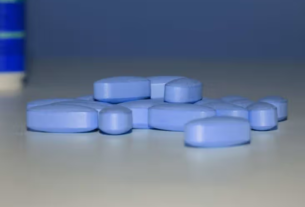Hair is one of the most expressive parts of our body, but it is a nightmare that comes true when they begin to fall. There are various techniques that we try to save our hair from falling and to have a fuller head of hair. But sometimes, all of these methods don’t work, and there is apprehension to undergo a hair transplant. Platelet Rich Plasma Therapy or PRP Toronto is one such procedure that can help to remain damaged follicles, stimulate hair growth and provide healthier hair without having to undergo any cosmetic process. It is an effective procedure that is minimally invasive. If you are looking at non-surgical procedures to help stimulate hair growth, then this is the best option. We have put together some information to help you understand how the therapy works and what it can do for you.
What is PRP therapy?
Platelet Rich Plasma therapy or PRP is a non-surgical and natural hair loss treatment. The patient’s platelet-rich plasma is used to repair damaged follicles and stimulate fuller and healthier hair growth. In the process, some blood is drawn from the patient, and it is then placed into a centrifuge. This is then spun at a very high speed until the stem cells or the platelets are separated from other blood components. Following the isolation of the plasma, it is then injected into the scalp using a needle. This platelet-rich plasma helps to stimulate hair growth by repairing dormant or damaged hair follicles. It is usually injected into those areas of the scalp which are experiencing hair loss. This treatment is highly effective for both men and women.
What is Platelet?
Platelets are a very crucial component of our blood. They aren’t considered cells and are smaller than white and red blood cells. The platelets do blood clotting and wound healing. They are considered to be the first responders when the blood clotting process begins. When there is bleeding happening, the platelets manipulate their shape to interlock with other platelets and form a kind of barrier that stops bleeding the wound. Apart from being the first responders to any injury that is bleeding, they are also a biochemical storehouse of the molecules that regulate and signal these growths like factors and help recover and heal flesh and tissue.
Is the procedure painful?
The plasma is injected into the scalp so that you might experience some pain and discomfort from it.
However, some local anesthetic would be administered, which would help to alleviate any possible pain or discomfort.
How many sessions are needed for the best results?
To get the best results out of the treatment, you would require about three treatment sittings across an interval of 1 month. For effective results, you should wait for about 3 to 4 weeks for the second sitting, another 3 to 4 weeks before undergoing the third round of treatment. It is suggested that you undergo regular treatments once every year.





